How To Soundproof a Closet? 12 Proven Ways
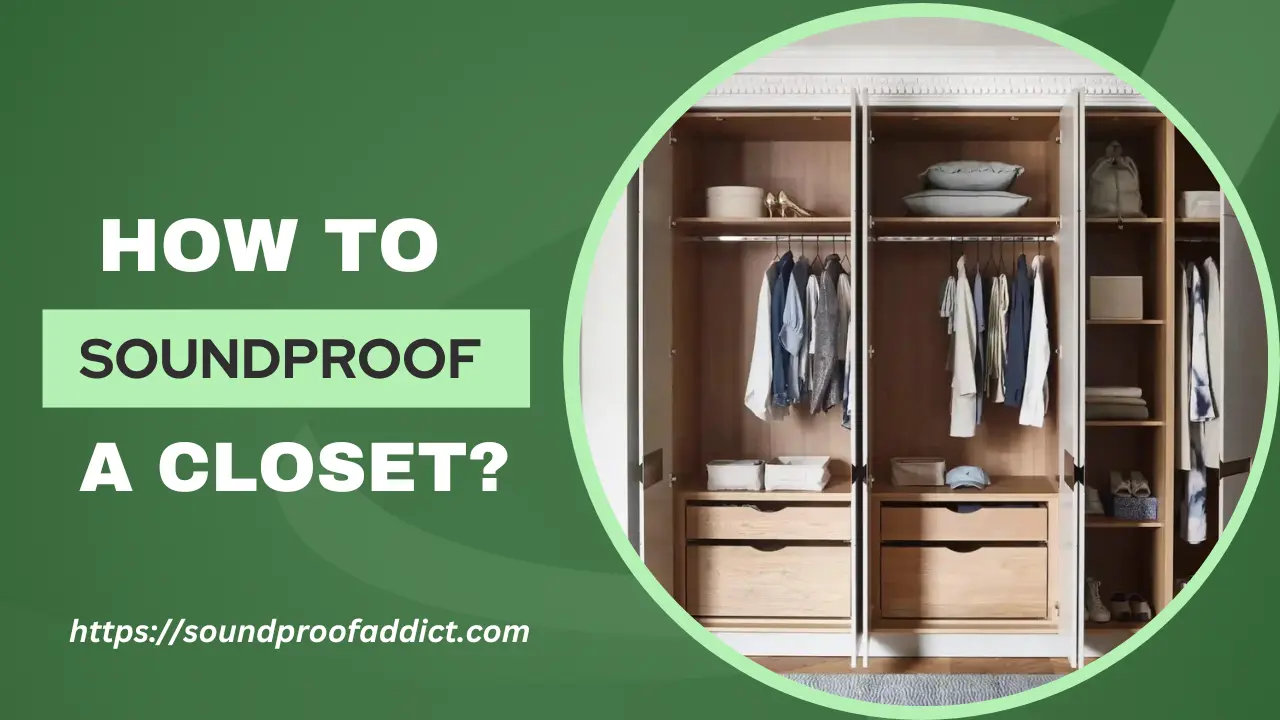
Do you want to soundproof your closet? Whether you want to use your closet as a personal workspace or you want to turn your closet into a recording studio, soundproofing it will be super beneficial.
Doing so will help you keep noise out and will result in higher-quality audio recordings. And I am not stressing you but soundproofing a closet can be super complicated if you don’t know what to do and where to start.
So in this guide, I will tell how you can do it effectively and I am going to share 12 proven ways to soundproof a closet. Let’s dive in…
12 Ways To Soundproof a Closet
Alright, here are that 12 easy and effective methods to soundproof a closet:
1: Sort out and remove the unnecessary racks
Any rack that’s full of stuff can make it difficult for you to place any soundproofing materials on the walls.
So decluttering and removing unnecessary racks is an important step in soundproofing a closet, and you shouldn’t try to neglect it if you can do it.
If you don’t want to remove the racks for some reason, then it is okay because soundproofing material can be cut to size. However, if you can, it’s highly recommended to clear some space by removing those racks.
To remove the unnecessary racks, start by removing everything from the closet. This will give you a clear idea of what you have and allow you to sort items into keep, donate, and discard piles.
Be honest with yourself about what you truly need and use on a regular basis, and consider removing those items that no longer serve a purpose or that are unnecessary to you.
Once you have sorted, it’s time to remove the racks. Start unscrewing screws or bolts that are holding the racks. If the racks are glued to the wall of the closet, use a putty knife to gently pry them.
2: Use sealant to seal any opening and crack that you see
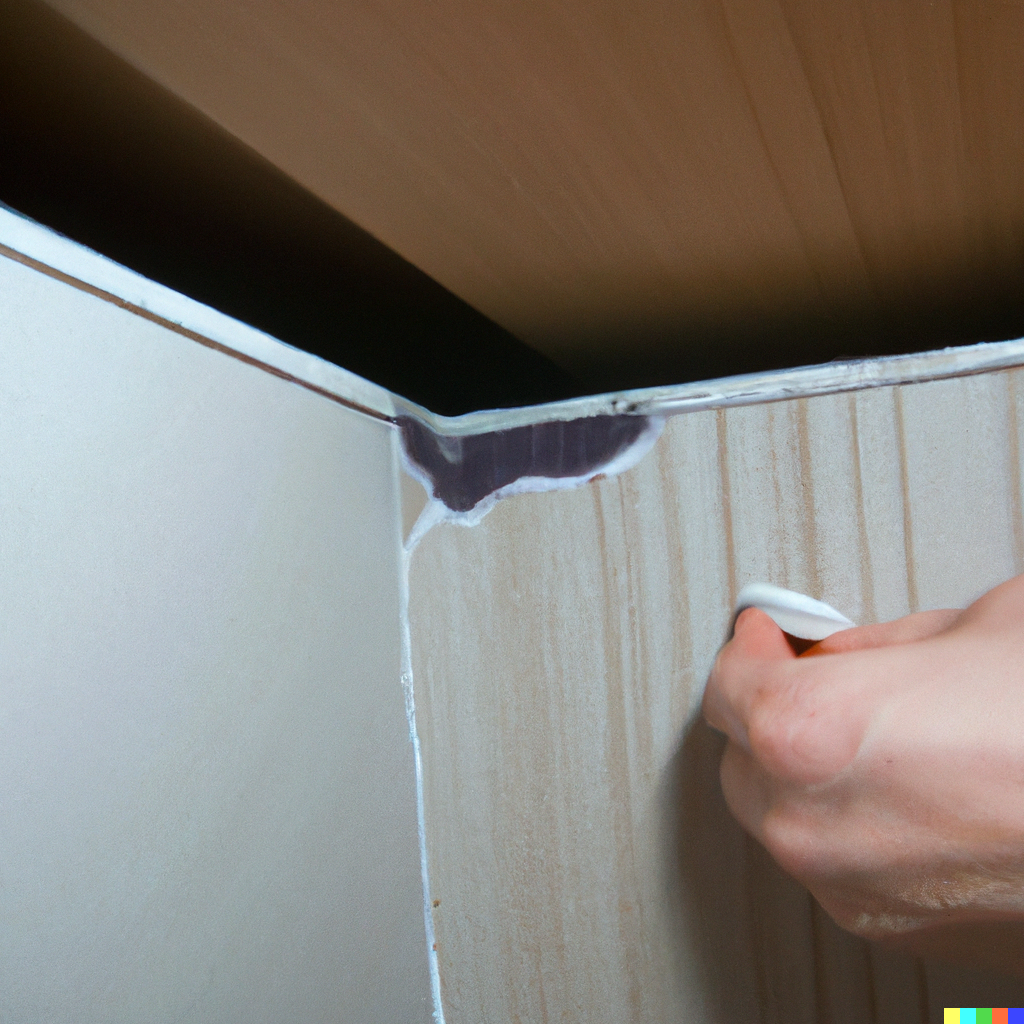
Sealing gaps and cracks is super important. It is one of the most effective yet simplest and easiest ways to soundproof a closet. Even small gaps can allow sound waves to pass through.
To seal any opening and cracks in your closet, inspect the closet properly for any gaps or holes in the walls, ceiling, or floor. Some common areas to check are around the door frame, electrical outlets, and the corner.
Once you’ve identified gaps, use acoustic sealant to seal them. Keep in mind to fill and seal the gaps and cracks completely to get the best results from your efforts.
However, if there are larger gaps or cracks, you may need to use soundproofing putty or foam insulation to fix them.
3: Apply weather-stripping around the closet door
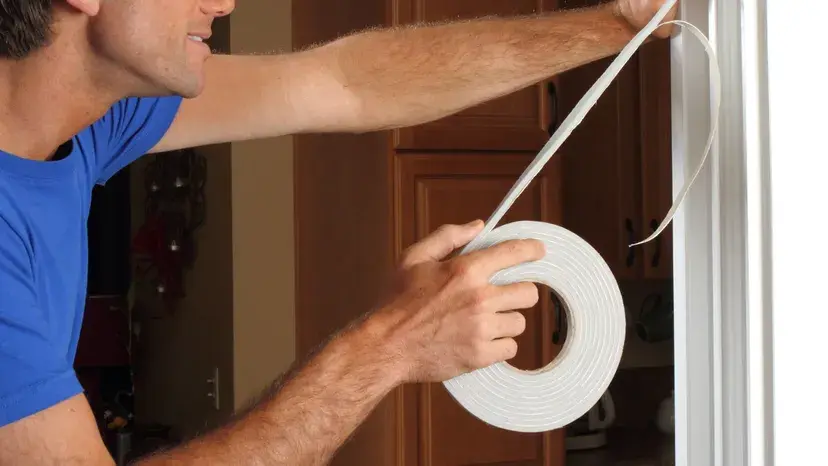
Believe it or not, closet doors can allow sound to seep through the gaps around the door. So it will be best if you seal those gaps by applying weatherstripping around the closet door to prevent noise from coming in.
To apply weather-stripping to soundproof your closet, first, clean your closet door frame properly and remove any dirt, and debris so that weather-stripping adheres properly.
Once you cleaned the door frame, take a measure of the length and width of the door frame then cut the weather-stripping tape to the size.
Then peel the backing and firmly press it onto the door frame, starting from the top and moving to the sides.
4: Install door sweep
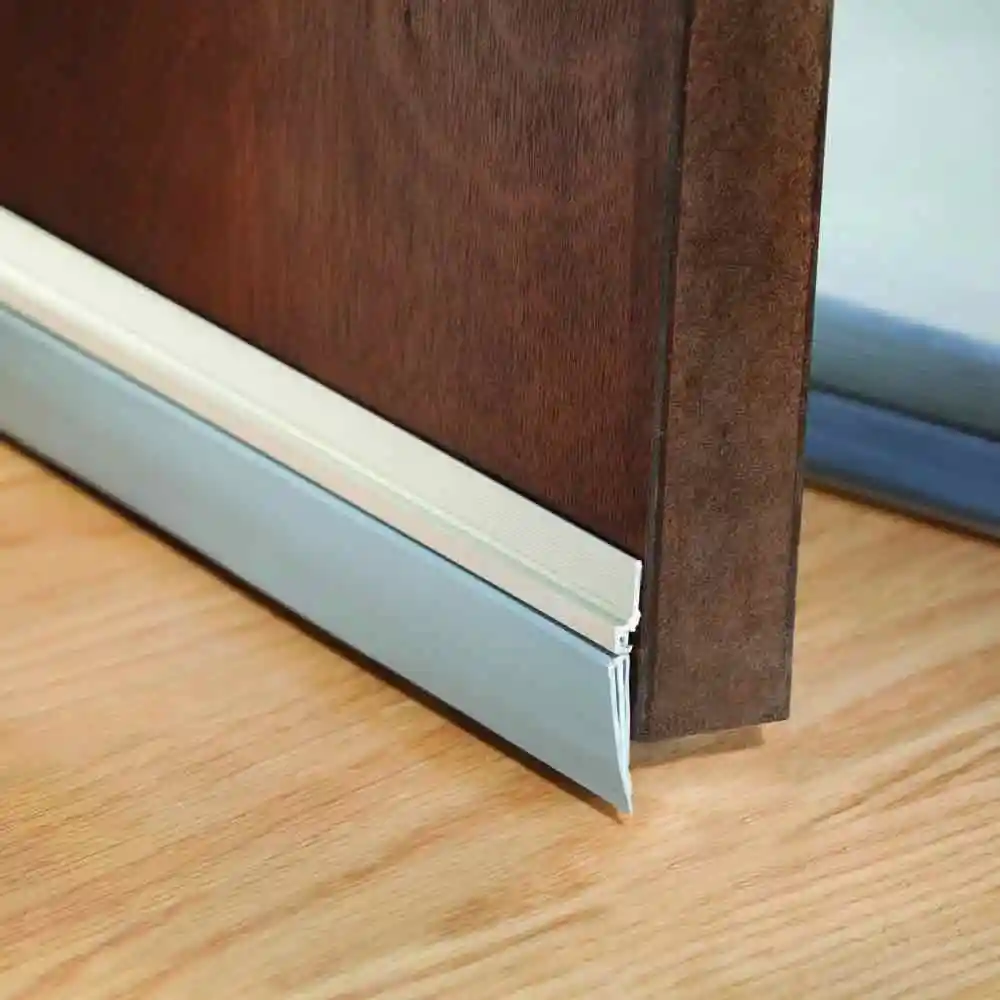
A door sweep is a handy gadget you can add to the bottom of your closet door to stop sound from slipping through the gap between the door and the floor.
These are budget-friendly and easier to install. They can reduce the noise coming in by as much as 9 decibels (I’ve tested this myself!).
To install it, purchase one that matches your door’s length and can be attached with screws. Once you have it, align it properly and secure it to the bottom of your closet door using those screws.
After installing it, make sure that your closet door is moving freely, if it is not then you may have messed up with the installation. Adjust the door sweep to fix this issue.
5: Add a layer of the drywall sheet on the wall
Adding a layer of the drywall sheet to your closet walls is really the most effective way to soundproof a closet. This will absorb sounds and prevent them from echoing off the walls, helping you to keep the overall noise level down.

According to Lee Wallender, drywall has an STC rating of 34 which is high and it is even better than the STC rating of a hollow core door.
STC rating basically tells us how something is good at block sound, it goes from 25 to 65 and having an STC rating of more than 30 is considered good. To install drywall to soundproof a closet wall, here are the steps you need to take:
But first, gather the important materials that are mentioned below:
- Drywall sheets (usually 4’x8′)
- Drywall screws
- Screwdriver or drill
- Drywall joint compound (mud)
- Drywall tape
- Trowel or putty knife
- Safety goggles and a dust mask
- Measuring tape
Step-by-Step Guide:
1. Prepare the Closet:
Clear out the closet and remove any items from the walls and make sure the walls are clean and free of debris.
2. Measure and Cut Drywall:
Measure the dimensions of the closet walls where you plan to add the extra layer of drywall. Transfer these measurements into the drywall sheets and cut them accurately using a utility knife.
3. Attach the Drywall:
Position the drywall sheets against the closet walls and attach them using drywall screws. Place screws about every 12 inches along the studs and ensure that the drywall screws are slightly countersunk into the drywall but not over-tightened to avoid damaging the drywall.
4. Fill Joints and Screw Holes:
After securing the drywall, apply a thin layer of drywall joint compound (mud) over the seams where the drywall sheets meet.
Also, fill in the screw holes and use drywall tape into the mud over the seams to reinforce them. You are now done!
6: Cover the wall with soundproof blanket
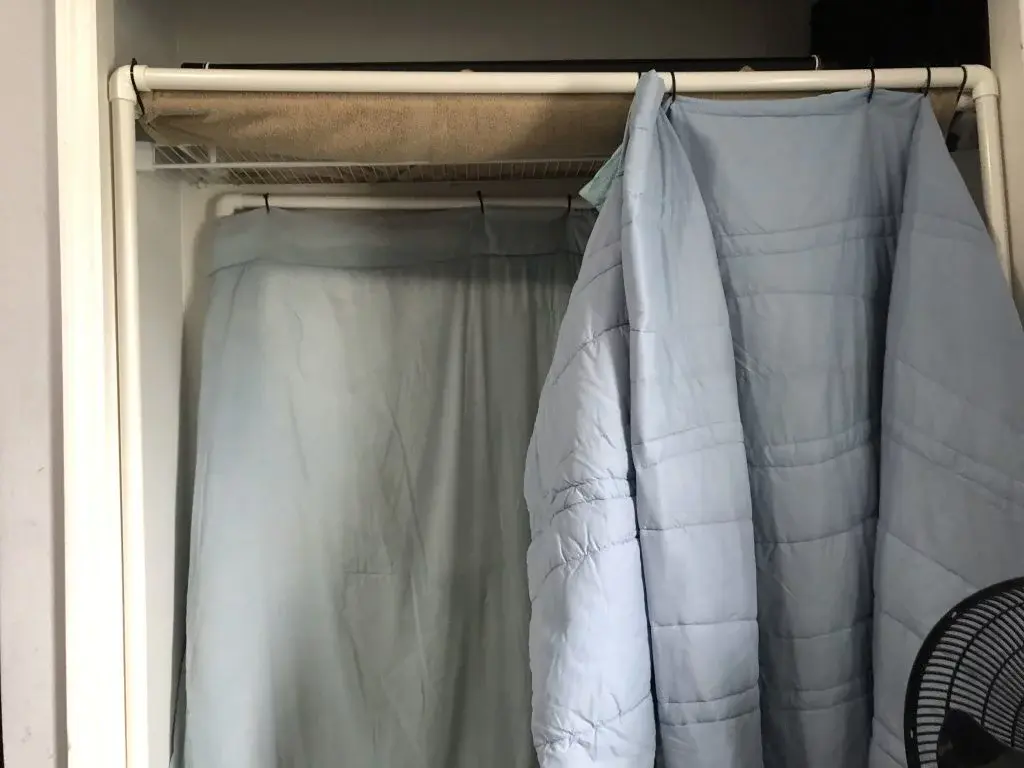
Using soundproof blankets for covering the walls of your closet is an easy and affordable way to soundproof your closet.
Soundproof blankets are made of fiberglass and are designed to absorb sound and minimize their transmission. They can be hung directly on the wall.
To noise-proof your closet with soundproofing blankets, purchase a few of these as per your needs and the dimensions of your closet wall. Most of the blankets of this day come with grommets or loops for easier installation.
So simply put some suction hooks on the upper portion of the closet wall and hook the blanket in it.
7: Place a soundproof carpet on the floor
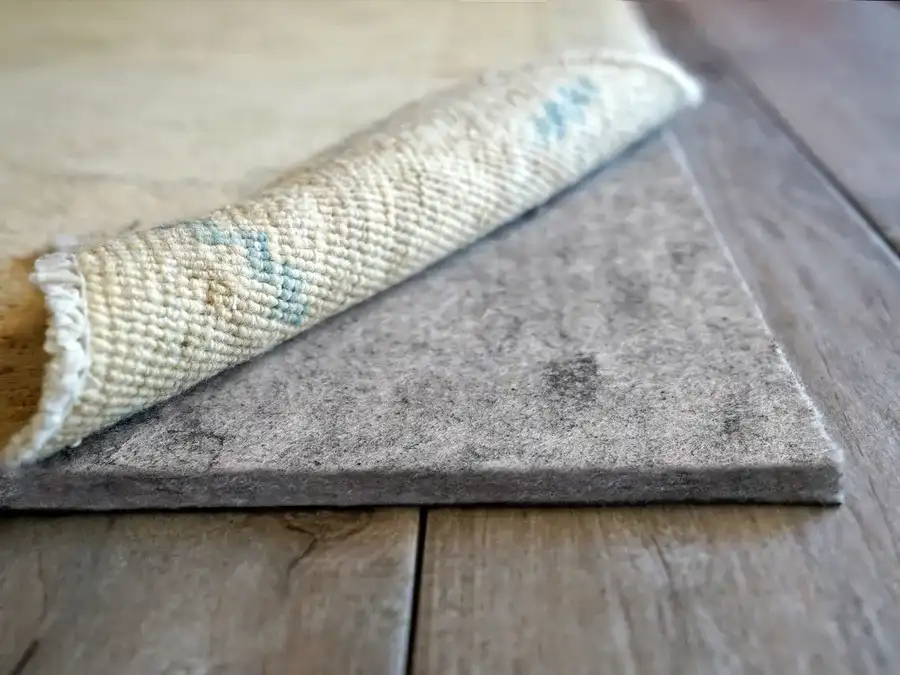
Putting a soundproof carpet on your closet floor is a practical solution to make the closet more acoustic.
It will help absorb sound and reduce echoes within the space and this step is particularly more beneficial for those who want to soundproof their closet for recordings.
Soundproof carpet doesn’t need any kind of special installation, so you don’t have to worry about it. When choosing a soundproof carpet, make sure to choose one that is thick as thicker carpet tends to be better at absorbing sound.
8: Use acoustic panels to cover the wall of the Closet
Acoustic panels are one of the most popular and affordable soundproofing materials on the market. They are mostly used in recording studios since they are pretty good at absorbing sound and preventing it off the surface.
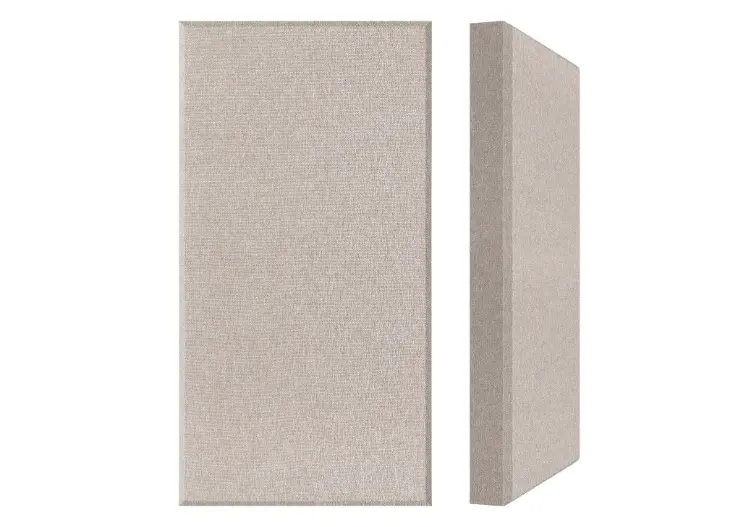
There is a wide range of acoustic panels to choose from but I would recommend you get one that is thick and made from materials such as fiberglass and also get panels that are self-adhesive for easier and convenient installation.
9: Use Mass Loaded Vinyl (MLV) to soundproof your closet
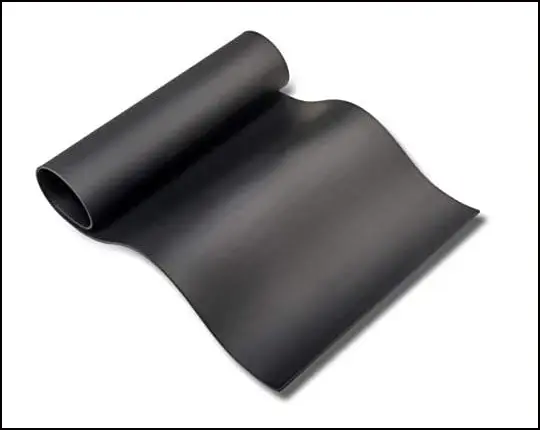
Mass Loaded Vinyl (MLV) is a popular soundproofing material known for its excellent soundproofing ability and it is also my favorite one.
MLV is great for soundproofing because it has a high-density core which makes it great at absorbing sound and blocking. It is usually made up of a sheet of vinyl. (Know more about MLV)
To use MLV in your closet, measure the dimensions of your closet and purchase enough MLV to cover the walls, ceiling and door of the closet. MLV is available in rolls, which can be cut to size with a utility knife.
Next, attach it to the closet walls using heavy-duty staples or nails. Place staples or nails along the edges and corners of the MLV, spacing them evenly. Repeat this process for the other closet walls, the ceiling, and the door
10: Hang soundproof curtains in front of the closet door
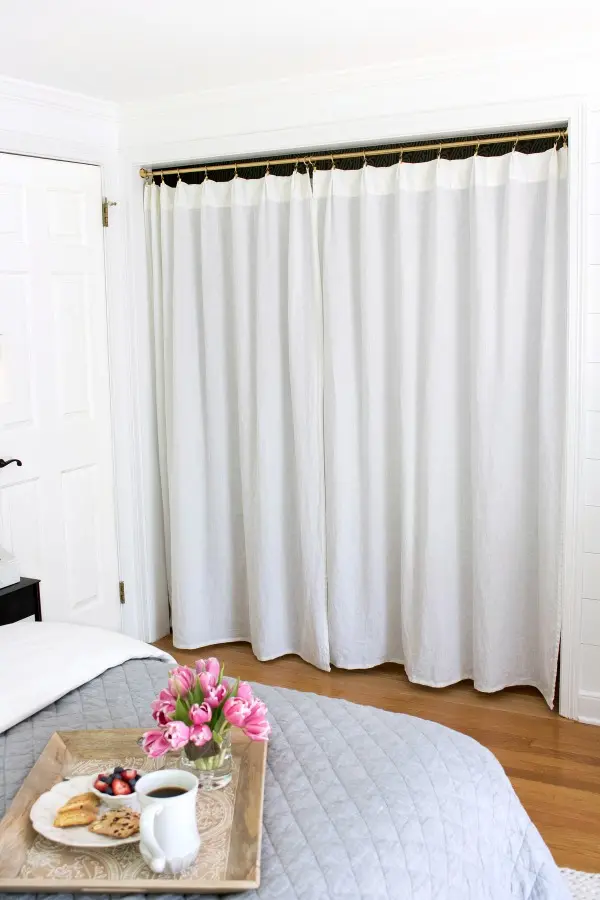
Hanging soundproof curtains in front of the closet door is a super easy way to reduce noise. These curtains work by absorbing sound and muffling the sound waves.
Recently I tested a soundproofing curtain to see how much sound they can actually reduce and I found a difference of 29 dB, which is quite good. But the curtain I used to test was a really high-quality curtain with 3 layers.
A good quality soundproof curtain can cost anywhere between $20 to $80. When choosing a soundproof curtain, look for one that is heavy and thick, as it will be more effective than light and thin ones.
It’s also important to go with a curtain that fits the door properly. Once you have chosen the right curtain, hang it on the inside or outside (as you prefer) of the door using curtain hooks or a curtain rod.
Related: Noise reducing curtains for closet door
11: Use soundproof wallpaper
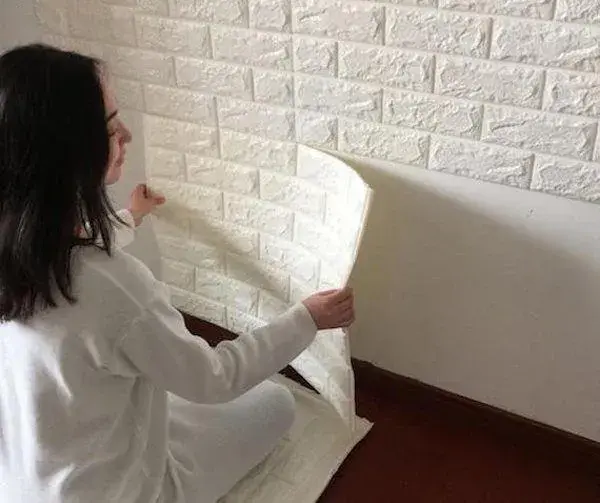
If you’re looking for a more decorative way to soundproof your closet, then consider using soundproof wallpapers.
Soundproof wallpaper is formulated to absorb sound, and it can be a great way to add a touch of style to your closet but it sucks when it comes to reducing the noise from one side to another. We only found a difference of 4 dB which is noticeable but not effective at all.
However, if you are still going to use soundproof wallpapers for soundproofing your closet then make sure to cover the entire wall surface area with it and also seal all the gaps and cracks on your closet properly. Otherwise, these gaps and cracks will ruin your soundproofing.
12: Use a white noise machine
A white noise machine produces a variety of soothing sounds, such as rain, wind, and ocean waves, that can help mask unwanted noise coming from outside.
You can adjust the volume of the machine to find the perfect balance between creating a calming atmosphere in your closet.
How to soundproof a closet for recording?
To soundproof a closet for recording, first seal all the gaps in your closet by applying weatherstripping, using acoustic caulk and installing a door sweep.
After doing that you can either attach a soundproofing blanket that is designed to be used in a recording studio such as “Quiet Quilt™ 2-Sided Barrier Blanket” or you can attach “UMIACOUSTICS Acoustic Panels”.
But in case you are looking for a cheap option for soundproofing your closet for voice over then attach a layer of plywood sheet to the walls of your closet then hang standard soundproofing blankets over the walls, this approach is super effective and also relatively inexpensive.
How to soundproof a walk-in closet?
Soundproofing a walk-in closet is similar to soundproofing a standard closet. Again, focus on sealing gaps properly and using soundproofing curtains that are made up of 3 layers or you can also go with blankets.
You can also explore options such as installing drywall sheets, but I wouldn’t recommend it strongly if you are not super serious about soundproofing your walk-in closet as the drywall itself and the installation may cost hundreds of dollars. But still, if you are on a good budget then the option is yours.
How to soundproof a furnace closet?
For a furnace closet, you also need to think about fire safety along with soundproofing. So to soundproof a furnace closet, use fire-rated materials to soundproof it, such as fire-rated drywall with Green Glue, a sound-damping compound, to the closet walls.
For the door, replace the hollow core door in your closet with a solid core door. They are naturally good at blocking out sound.
After applying these two techniques you will see a significant improvement in noise reduction and you will notice that your furnace closet is quieter than before.
I recommend checking out the article “How to Soundproof a Furnace Closet” on the website secondskinaudio.com for more in-depth information on this topic.
How much does it cost to soundproof a closet?
Well the cost of soundproofing closets is not going to be the same for all of you, it makes sense right? But it is possible to do some estimations.
So let’s say you are soundproofing a standard size closet. And as mentioned in a post by ClosetAmerica.com, the size of a standard closet is 6 ft. x 8 ft. x 24 inch, and let say you opt for the budget-friendly option of foam panels, average foam panel size is 12 x 12 inch so you’ll need around 56 of these panels, which typically add up to about $40 to $50 in total expenses.
On the other hand, if you decide to go with drywall sheets, which is a more expensive choice, then you will need an investment of $41.60 to $52 as standard drywall costs $0.40 to $0.50 per square foot as mentioned by Forbes.com.
Additionally, you should factor in installation costs, which can vary between $20 to $70, depending on the materials used for attaching the drywall.
To ensure proper soundproofing, it’s essential to include weatherstripping and acoustic sealant, which might cost you approximately $40 or even more.
So, if you’re taking the DIY route, the cost of soundproofing your closet could fall anywhere between $40 to $125, depending on your selections.
If, however, you decide to hand it to a professional, then you can expect to pay a big amount ranging from $300 to potentially over $1000. The final cost with a professional will depend on the complexity of the project and the materials they use for soundproofing.
Conclusion: Soundproof a closet
In conclusion, soundproofing a closet is not an easy task, it can be complicated if you not know what you are doing. With our 12 effective ways to soundproof a closet, you now have the knowledge to reduce or eliminate unwanted noise from your closet.
We’ve also discussed various soundproofing materials and techniques, including using acoustic foam, mass loaded vinyl, soundproof curtains, and white noise machines.
More from us:
